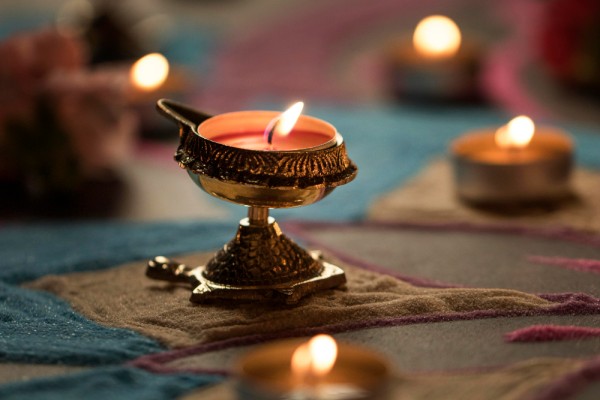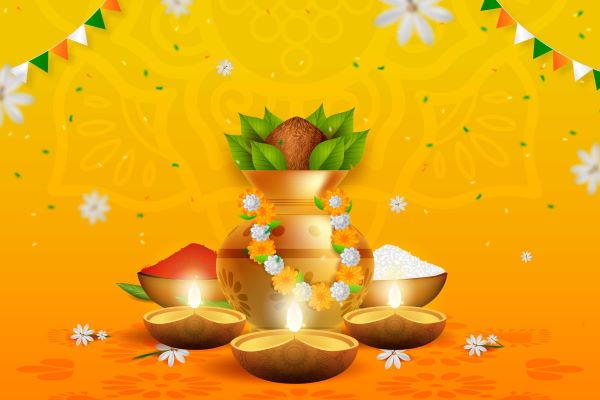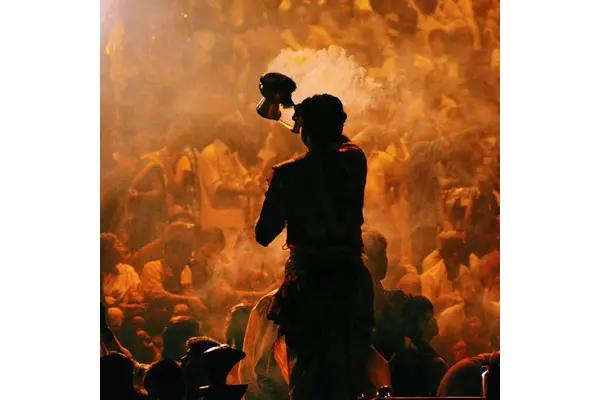
Significance Of Performing Aarti At Hindu Temple In Brampton
Om sarve bhavantu sukhinaḥ |
sarve santu nirāmayāḥ |
Sarve bhadrāṇi paśyantu |
mā kaścid duḥkhabhāg bhavet ||
The Aarti ceremony is highly significant in the Hindu faith, and it involves waving lamps to connect with the divine and offer prayers. It's not just a simple practice; it's a complete process of invoking and expressing gratitude to the Supreme. Aarti can mean different things depending on the context, like love, kindness, thankfulness, prayer, or wish.
For instance, when Aarti is performed for elders, it shows respect. When it's done for deities, it becomes a form of prayer. Similarly, when Aarti is conducted for homes or vehicles, it symbolizes hope and a desire for their well-being. It's also believed that making symbolic hand movements over the flame during Aarti can bring good fortune and luck.
Origin of age-old tradition:
Hinduism is recognized as one of the oldest religions worldwide, spanning thousands of years. The ancient Sanatan Dharma of Hinduism is believed to have existed even before the Vedic period. The Vedas, revered as the most sacred texts in Hinduism, were composed at different times, with the Rigveda being considered the earliest. The significance of Aarti was initially mentioned in the Skanda Purana, an ancient Hindu scripture.
The origin of Aarti can be traced back to ancient Vedic fire rituals called homa. Another theory suggests that it started centuries ago when priests would use an oil lamp to illuminate a sacred image hidden deep inside the inner sanctum of a temple resembling a cave. To give devotees a glimpse of the Deity, the priest would wave the lamp from the Deity's head to toe while reciting Vedic mantras or singing prayers. Over time, this practice evolved into what we now know as Aarti.
The meaning of performing Aarti:
The term 'art' or 'aarti' in Sanskrit comprises two parts. The prefix 'aa' means complete, and 'rati' means love. Therefore, the Aarti represents an unconditional and unwavering love for God. It is sung and performed with respect, admiration, and a focused state of mind.
The practice of Aarti:
The Aarti, often called the 'ceremony of light', involves sadhus (Hindu monks) and pujaris (attendants to the Deities) waving lighted wicks before the sacred images. This action infuses the flames with the Deities' love, energy, and blessings.
A wisp (chamar) or a white cloth is waved in certain aartis. Collectively, these elements represent the five elements of the world – 1) space (white cloth), 2) air (wisp), 3) light (flames), 4) water, and 5) earth (flowers). They symbolize the offering of the entire creation to the Deity during the arti ceremony.
What are the rules for performing Aarti?
Performing Aarti is not only just some simple step but also a way of showing great respect towards the deities. There are several rules for doing Aarti to ensure following correct rituals and let us discuss into step-by-step.
- Prepare yourself by washing your hands, face, and feet, and wear clean clothes.
- Set up the Aarti area before the deity or sacred object, placing the idol or picture in a prominent position.
- Gather the necessary items like a plate, bell, flowers, incense sticks, camphor, a small towel or cloth, and a container with water.
- Aarti can only be performed by chanting prayers or mantras or singing Bhajan Kirtan to invoke the presence of the deity.
- Hold the plate in your hands and make a circular motion in front of the deity, offering flowers, incense, and other items as a symbol of respect and devotion.
- Light the lamp and hold it in your right hand, moving it in circular motions before the deity while singing Aarti songs or reciting mantras.
- Use your left hand to ring the bell, creating a pleasant sound that helps ward off negative energies.
- Towards the end of the Aarti, light a piece of camphor on the lamp. Hold it in your right hand and make clockwise circular motions before the deity.
- After completing the Aarti, distribute the offerings as Prasad to those present, and take a few drops of water in your right hand to sip as a form of purification.
- In the last segment, Conclude the Aarti by offering a final prayer, expressing some gratitude, and seeking blessings from the deity. Place the lamp back in its original position.
Significance of performing Aarti:
Devotees believe that the Aarti holds deep spiritual significance. They see the burning wicks as a symbol of selfless service to the Deities and pray that they, too, can offer themselves wholeheartedly in service to God.
In the same way that the wicks eventually burn out, devotees also pray for the dissolution of their ego through such dedicated service and humble worship.
Moreover, the light emitted by the wicks is seen as a metaphor for the illuminating power of proper knowledge about God and the guru. This knowledge alone can dispel ignorance and false understanding.
Conclusion
Shri Gauri Shankar Mandir, the revered Hindu temple in Brampton, offers spiritual assistance to address the significance of performing Aarti through proper mantra chanting and puja rituals. We also conduct other ceremonies, such as Grihapravesh rituals, and provide insights into your Kundli for a harmonious marriage. Our guidance includes selecting suitable gemstones based on your horoscope. To learn more about the spiritual services available for a serene and fulfilling life, visit our website.
You can also read our other article: Worshipping Gods in Hindu Temples: A Sanatan Dharma Perspective.
Follow Us On:-





